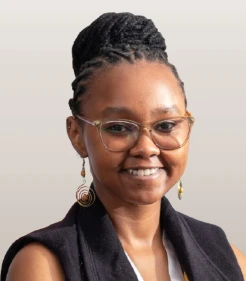2956 - A Systematic Review and Narrative Synthesis of the Availability, Accessibility and Staffing of Radiation Oncology in Sub-Saharan Africa
Presenter(s)

M. S. Kitonga1, M. Koskei1, L. Koibarak1, C. Mwaba2, and L. Sheets3; 1Moi University College of Health Sciences, Eldoret, Kenya, 2Cancer Diseases Hospital, Lusaka, Zambia, 3University of Missouri, School of Medicine, Columbia, MO
Purpose/Objective(s): Sub-Saharan Africa (SSA) experiences disparities in access to essential therapy options despite its rising cancer burden. Despite SSA being made up of 46 out of 54 African countries, only one-quarter of all radiotherapy (RT) services in Africa are in this region. This study aimed to synthesize evidence on the current state of radiation oncology services in SSA focusing on the availability, accessibility and staffing of these services.
Materials/Methods: In this systematic review and narrative synthesis, we searched PubMed (with Medline) and CINHAL, with articles published between 2019 and 2024 on the themes of accessibility, availability and staffing of radiation oncology services in SSA being included. This duration ensured that the data we found was up to date. Systematic reviews and meta-analyses, animal studies, letters and opinions, protocols and case reports were excluded. Three independent reviewers screened the studies with disparities being solved by consensus. Data extraction was done in spreadsheet software and assessment tools were used to evaluate the quality of the included studies.
Results: We reviewed 234 studies with 14 duplicates and 126 articles being excluded after title-abstract screening. 59 studies did not meet the eligibility criteria and were excluded after full-text screening leaving 35 studies. Only 53.7% of all African countries had RT services with 25 countries completely lacking RT, all of which were in SSA. Across SSA, only 24.4% of people had access to RT within 2 hours of travel one-way by road. The machine to patient ratio in some existing RT centers was 1 machine to 35 million patients with high patient burdens in most countries leading to frequent machine breakdowns. About 75% of government-funded facilities lacked dosimetrists and radiation oncologists were few and mainly centered in the capital cities in most SSA countries. High treatment costs, geographical disparities in access and understaffed facilities contributed to high levels of treatment abandonment of up-to 74%.
Conclusion: There is a global variation in RT distribution based on income level per region. Africa has the greatest need for radiotherapy services but has limited capacity to upscale and curb this need. Many SSA countries have disproportionate supply versus demand, and poor systems and infrastructure to support radiotherapy machines. This study reveals the need for increasing investments in RT in SSA and enforcing policies and guidelines to increase visibility of the field and promote government and public interest. The importance of RT in cancer management in SSA is understated and increasing availability, access and human resource in this field will help against the rising cancer mortality rates in this region.
